Study on the Vibration Characteristics of the Telescope T80 in the Javalambre Astrophysical Observatory (JAO) Aimed at Detecting Invalid Images
Abstract
1. Introduction
1.1. Vibration in Large Structures
1.2. Vibration in Telescopes
1.3. Required Technology
2. Materials and Methods
2.1. Instrumentation Used and Working Environment
2.1.1. Controlled Environment
2.1.2. Experimental Environment
2.2. Methods
3. Theoretical Foundations
4. Experimental Results
4.1. First Experiment. Drift in the Decline Movements
4.2. Second Experiment. Straight Ascension Movement (from 0° to 40°) and Constant Decline 80°
4.3. Third Experiment. DC Filtering
4.4. Fourth Experiment. Coherence Analysis
5. Discussion and Conclusions
Author Contributions
Funding
Acknowledgments
Conflicts of Interest
References
- Yin, X.; Song, G.; Liu, Y. Vibration Suppression of Wind/Traffic/Bridge Coupled System Using Multiple Pounding Tuned Mass Dampers (MPTMD). Sensors 2019, 19, 1133. [Google Scholar] [CrossRef] [PubMed]
- Abdel-Ghaffar, A.M.; Scanlan, R.H. Ambient Vibration Studies of Golden Gate Bridge: I. Suspended Structure. J. Eng. Mech. 1985, 111, 463–482. [Google Scholar] [CrossRef]
- Wu, B.; Chen, X.; Wang, Q.; Liao, H.; Dong, J. Characterization of vibration amplitude of nonlinear bridge flutter from section model test to full bridge estimation. J. Wind Eng. Ind. Aerodyn. 2020, 197, 104048. [Google Scholar] [CrossRef]
- Al-Subaihawi, S.; Kolay, C.; Marullo, T.; Ricles, J.M.; Quiel, S.E. Assessment of wind-induced vibration mitigation in a tall building with damped outriggers using real-time hybrid simulations. Eng. Struct. 2020, 205, 110044. [Google Scholar] [CrossRef]
- Chapain, S.; Aly, A.M. Vibration attenuation in high-rise buildings to achieve system-level performance under multiple hazards. Eng. Struct. 2019, 197, 109352. [Google Scholar] [CrossRef]
- Yang, J.; Zhu, S.; Zhai, W.; Kouroussis, G.; Wang, Y.; Wang, K.; Lan, K.; Xu, F. Prediction and mitigation of train-induced vibrations of large-scale building constructed on subway tunnel. Sci. Total Environ. 2019, 668, 485–499. [Google Scholar] [CrossRef] [PubMed]
- Tian, X.; Song, Z.; Wang, J. Study on the propagation law of tunnel blasting vibration in stratum and blasting vibration reduction technology. Soil Dyn. Earthq. Eng. 2019, 126, 105813. [Google Scholar] [CrossRef]
- Kanzawa, T.; Tomono, D.; Usuda, T.; Takato, N.; Negishi, S.; Sugahara, S.; Itoh, N. Improvement of the Pointing Accuracy of the Subaru Telescope by Suppressing Vibrations. In Proceedings of the SPIE Astronomical Telescopes + Instrumentation, Orlando, FL, USA, 24–31 May 2006; p. 62673J. [Google Scholar]
- Stalcup, T.; Powell, K. Image motion correction using accelerometers at the MMT Observatory. In Proceedings of the SPIE Astronomical Telescopes + Instrumentation, Marseille, France, 23–28 June 2008; p. 70181H. [Google Scholar]
- Keck, A.; Pott, J.-U.; Sawodny, O. Accelerometer-based position reconstruction for the feedforward compensation of fast telescope vibrations in the E-ELT/MICADO. In Proceedings of the SPIE Astronomical Telescopes + Instrumentation, Montreal, QC, Canada, 22–27 June 2014; p. 91454H. [Google Scholar]
- Keck, A.; Pott, J.-U.; Sawodny, O. Accelerometer-based online reconstruction of vibrations in extremely large telescopes. IFAC Proc. Vol. 2014, 47, 7467–7473. [Google Scholar] [CrossRef]
- McBride, W.R.; McBride, D.R. Using frequency response functions to manage image degradation from equipment vibration in the Daniel K. Inouye Solar Telescope. In Proceedings of the SPIE Astronomical Telescopes + Instrumentation, Edinburgh, UK, 26 June–1 July 2016; p. 991110. [Google Scholar]
- Altarac, S.; Berlioz-Arthaud, P.; Foy, R.; Balega, Y.Y.; Fuensalida, J.J.; Thiebaut, E.; Dainty, J.C. Effect of telescope vibrations upon high angular resolution imaging. Mon. Not. R. Astron. Soc. 2001, 322, 141–148. [Google Scholar] [CrossRef][Green Version]
- Thompson, P.M.; MacMartin, D.G.; Thompson, H.A.; Sirota, M.J. Minimizing motor cogging and vibration for the Thirty Meter Telescope. In Proceedings of the 2017 IEEE Aerospace Conference, Big Sky, MT, USA, 4–11 March 2017; pp. 1–15. [Google Scholar]
- Trigona, C.; Ando, B.; Baglio, S. Measurements and Analysis of Induced Vibrations in Optical Telescopes. In Proceedings of the 15th International Multi-Conference on Systems, Signals & Devices (SSD), Hammamet, Tunisia, 19–22 March 2018; pp. 1476–1480. [Google Scholar]
- Keck, A.; Pott, J.-U.; Sawodny, O. Accelerometer-based online reconstruction of vibrations from delayed measurements. In Proceedings of the IEEE Conference on Control Applications (CCA), Sydney, Australia, 21–23 September 2015; pp. 424–429. [Google Scholar]
- Durand-Texte, T.; Melon, M.; Simonetto, E.; Durand, S.; Moulet, M.-H. Single-camera single-axis vision method applied to measure vibrations. J. Sound Vib. 2020, 465, 115012. [Google Scholar] [CrossRef]
- De Oliveira, H.G.P.; Bazan, M.; Bueno, C.S.N.C.; Sanfelici, L. The Lnls Metrology Building—Environmental Control Results. In Proceedings of the MEDSI 2018: Mechanical Engineering Design of Synchrotron Radiation Equipment and Instrumentation, Paris, France, 25–29 June 2018; pp. 143–146. [Google Scholar]
- Yoshino, T.; Sano, Y.; Ota, D.; Fujita, K.; Ikui, T.; Ohta, D.; Keiichi, F. Fiber-Bragg-Grating Based Single Axial Mode Fabry-Perot Interferometer and Its Strain and Acceleration Sensing Applications. J. Light. Technol. 2016, 34, 2241–2250. [Google Scholar] [CrossRef]
- Razzaq, N.; Sheikh, S.-A.A.; Salman, M.; Zaidi, T. An Intelligent Adaptive Filter for Elimination of Power Line Interference from High Resolution Electrocardiogram. IEEE Access 2016, 4, 1676–1688. [Google Scholar] [CrossRef]
- Tomasini, M.; Benatti, S.; Milosevic, B.; Farella, E.; Benini, L. Power Line Interference Removal for High-Quality Continuous Biosignal Monitoring with Low-Power Wearable Devices. IEEE Sens. J. 2016, 16, 3887–3895. [Google Scholar] [CrossRef]
- Huang, X.; Dong, H.; Tao, Q.; Yu, M.; Li, Y.; Rong, L.; Krause, H.-J.; Offenhäusser, A.; Xie, X. Sensor Configuration and Algorithms for Power-Line Interference Suppression in Low Field Nuclear Magnetic Resonance. Sensors 2019, 19, 3566. [Google Scholar] [CrossRef] [PubMed]
- Cenarro, A.J.; Moles, M.; Cristóbal-Hornillos, D.; Gruel, N.; Benítez, N.; Marin-Franch, A. The Javalambre Astrophysical Observatory project. In Proceedings of the SPIE Astronomical Telescopes + Instrumentation, San Diego, CA, USA, 27 June–2 July 2010. [Google Scholar]
- Cenarro, A.J.; Moles, M.; Cristóbal-Hornillos, D.; Marín-Franch, A.; Gruel, N.; Yanes-Díaz, A.; Chueca, S.; Varela, J.; Ederoclite, A.; Rueda-Teruel, F.; et al. The Observatorio Astrofísico de Javalambre: Goals and current status. In Proceedings of the SPIE Astronomical Telescopes + Instrumentation, Amsterdam, The Netherlands, 1–6 July 2012. [Google Scholar]
- Cenarro, A.J.; Moles, M.; Marín-Franch, A.; Cristóbal-Hornillos, D.; Díaz, A.Y.; Ederoclite, A.; Varela, J.A.; Vázquez-Ramio, H.; Valdivielso, L.; Benitez, N.; et al. The Observatorio Astrofísico de Javalambre: Current status, developments, operations and strategies. In Proceedings of the SPIE Astronomical Telescopes + Instrumentation, Montreal, QC, Canada, 22–27 June 2014. [Google Scholar]
- Hu, W.; Hicher, P.-Y.; Scaringi, G.; Xu, Q.; Van Asch, T.W.J.; Wang, G. Seismic precursor to instability induced by internal erosion in loose granular slopes. Géotechnique 2018, 68, 1–13. [Google Scholar] [CrossRef]
- Byrnes, P.W.; Lacy, G. Modal vibration testing of the DVA-1 radio telescope. In Proceedings of the SPIE Astronomical Telescopes + Instrumentation, Edinburgh, UK, 26 June–1 July 2016. [Google Scholar]
- Cenarro, A.J.; Moles, M.; Cristóbal-Hornillos, D.; Marín-Franch, A.; Chueca, S.; Ederoclite, A.; Varela, J.; Gruel, N.; Hernandez-Monteagudo, C.; Lopez-Sanjuan, C.; et al. The Observatorio Astrofisico de Javalambre: Current Status and Future Developments. In Proceedings of the X Scientific Meeting of the Spanish Astronomical Society, Valencia, Spain, 9–13 July 2012. [Google Scholar]
- White, G. Introducción al Análisis de Vibraciones; Azima DLI: Woburn, MA, USA, 2010. [Google Scholar]
- Marin-Franch, A.; Taylor, K.; Cenarro, J.; Cristobal-Hornillos, D.; Moles, M. T80Cam: A wide field camera for the J-PLUS survey. In Proceedings of the IAU General Assembly, Honolulu, HI, USA, 3–14 August 2015. [Google Scholar]
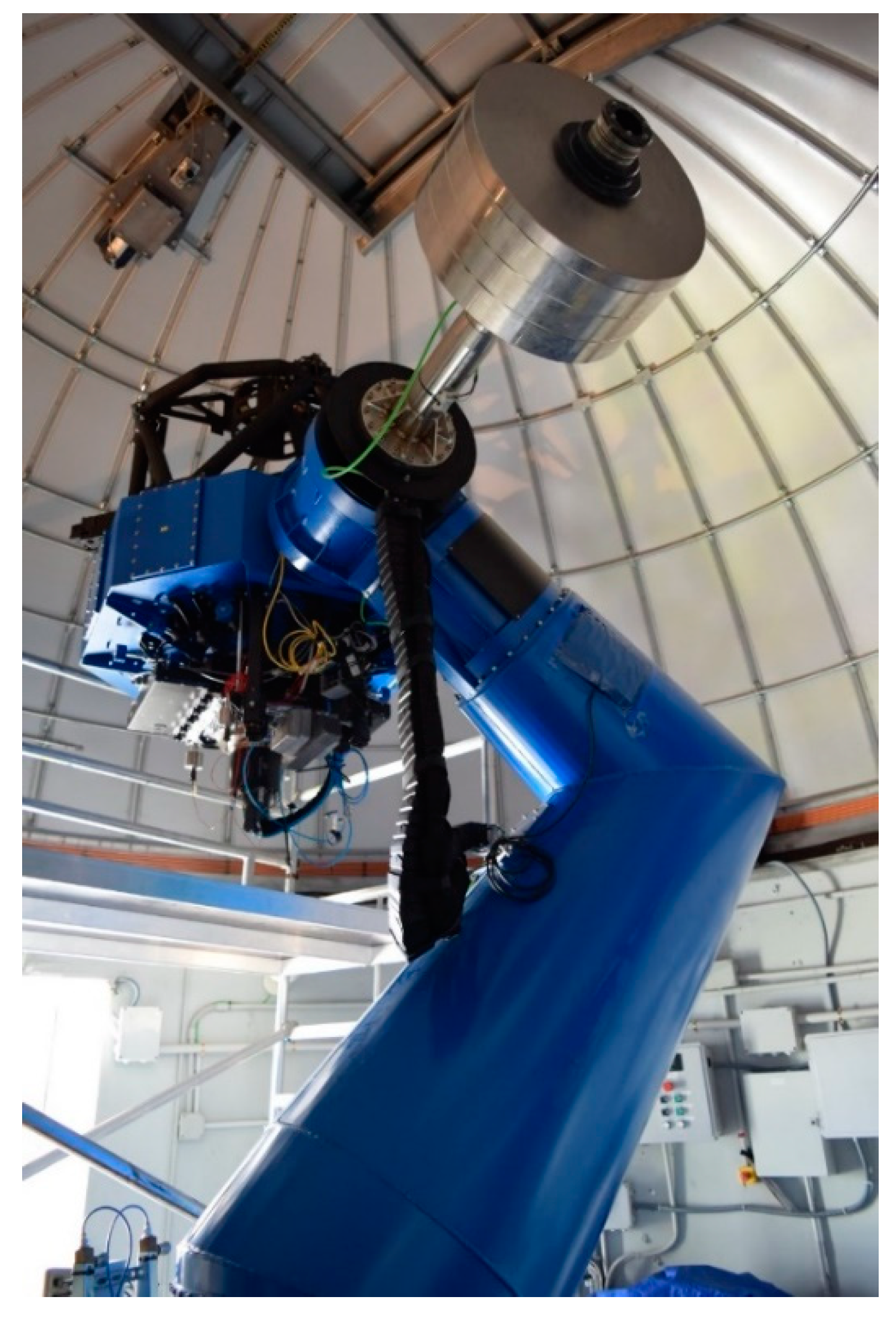
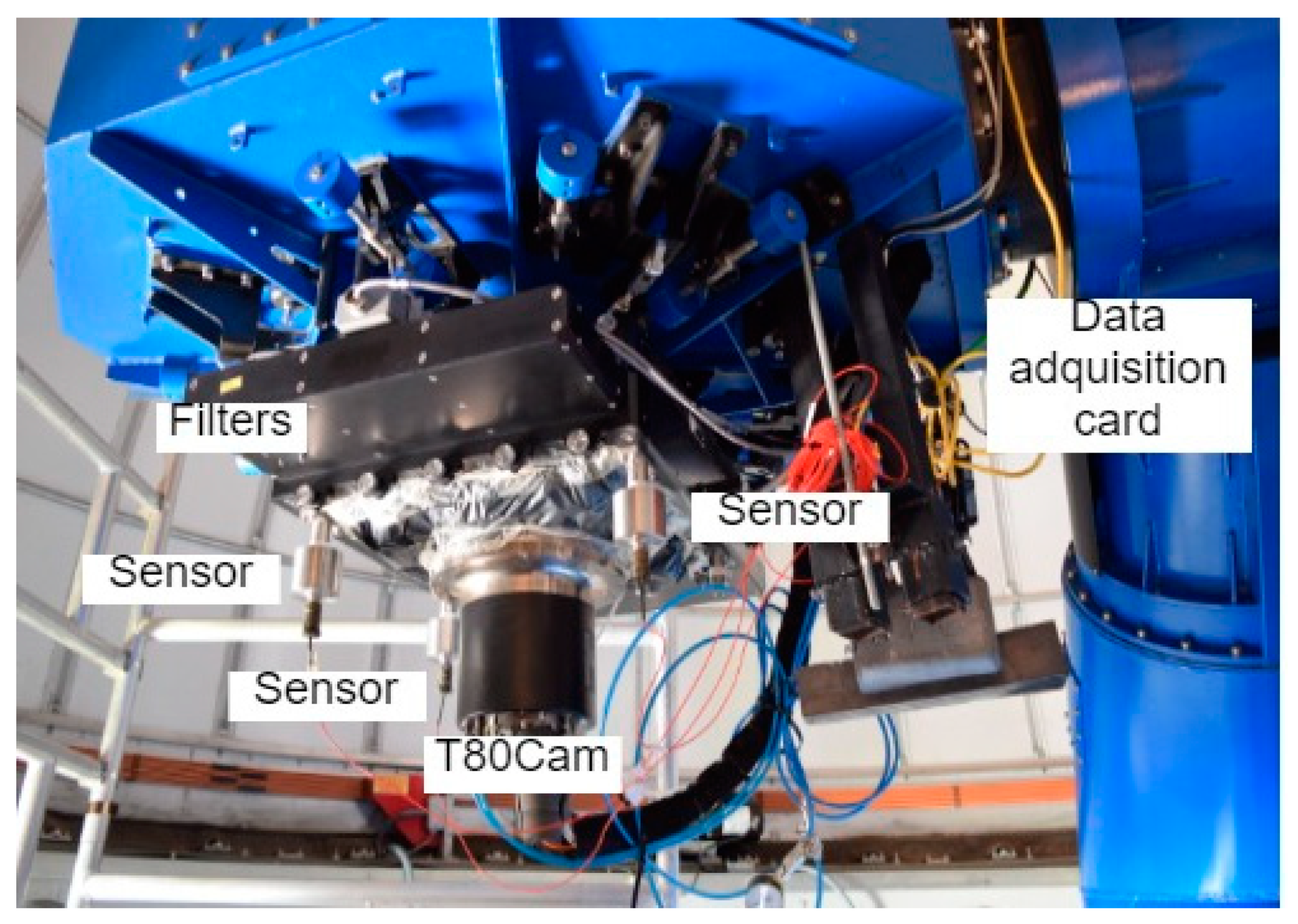
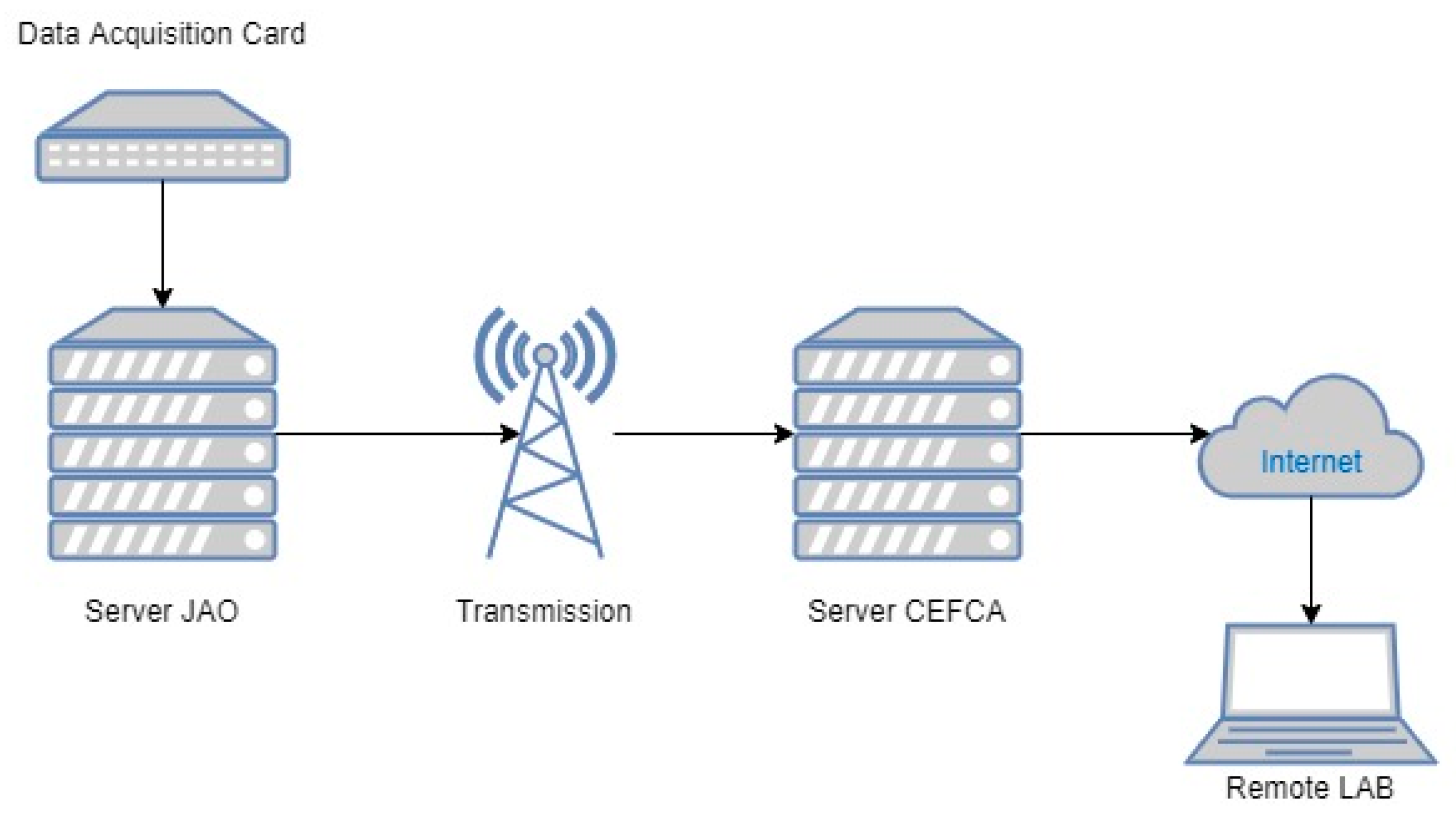
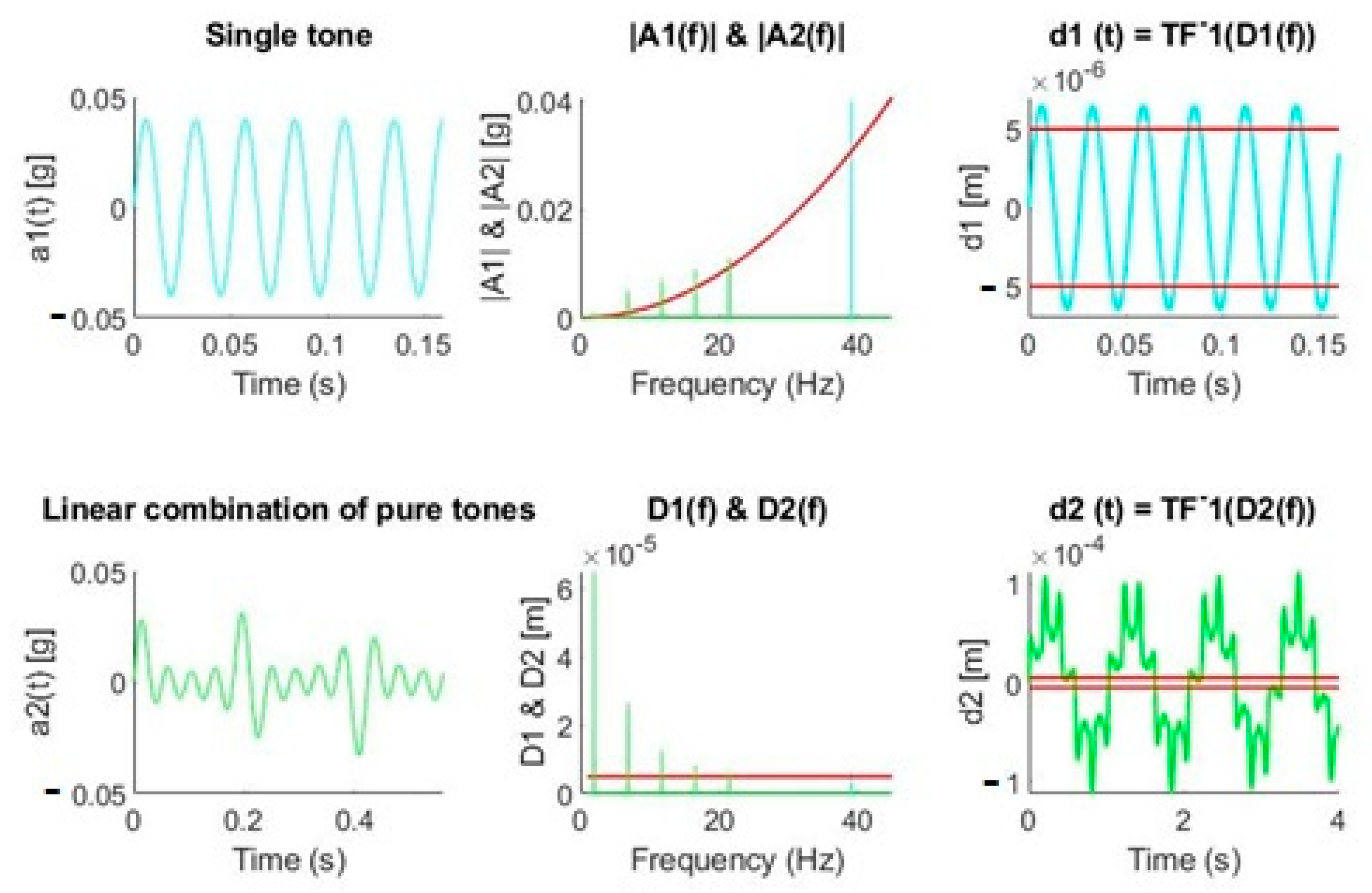

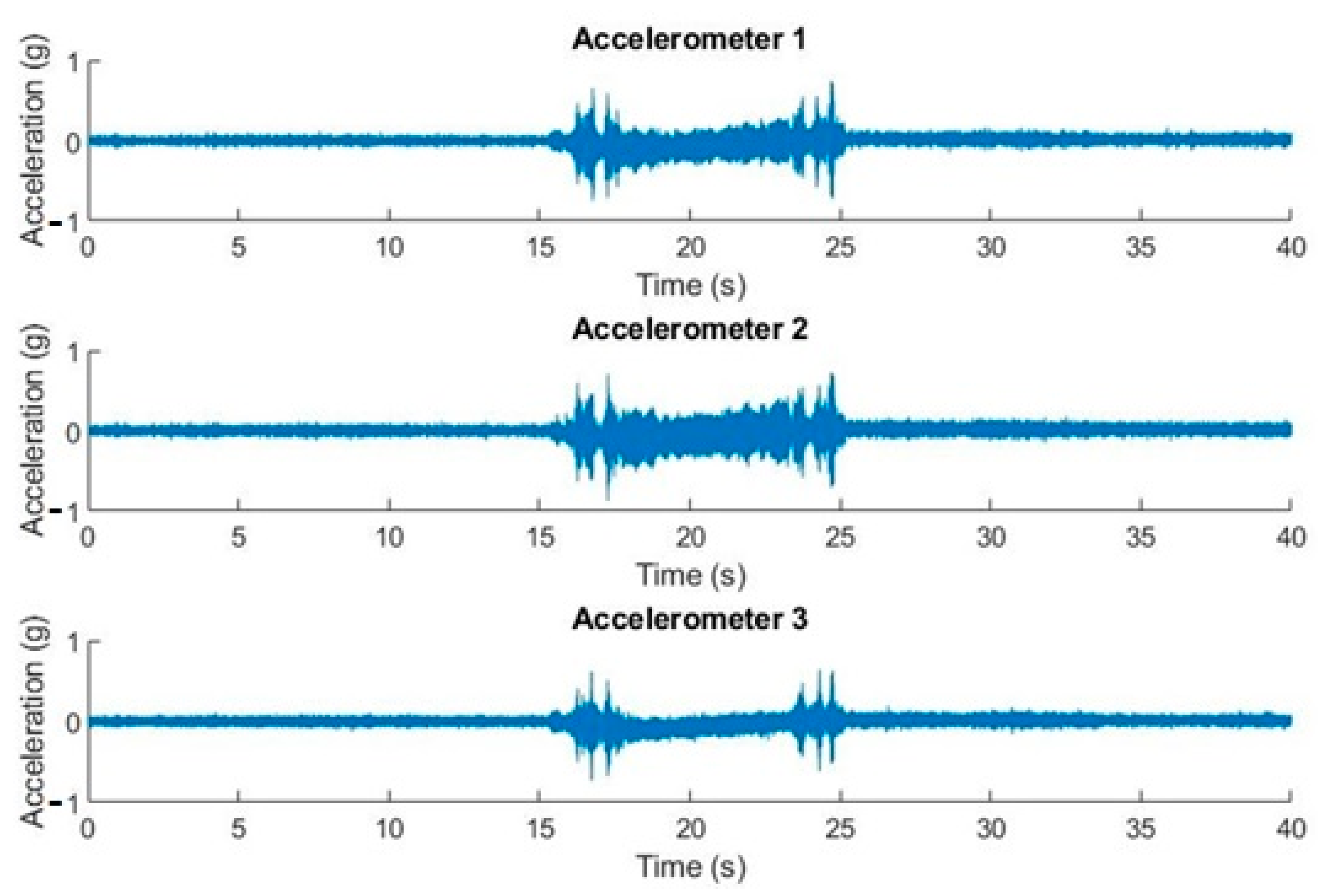
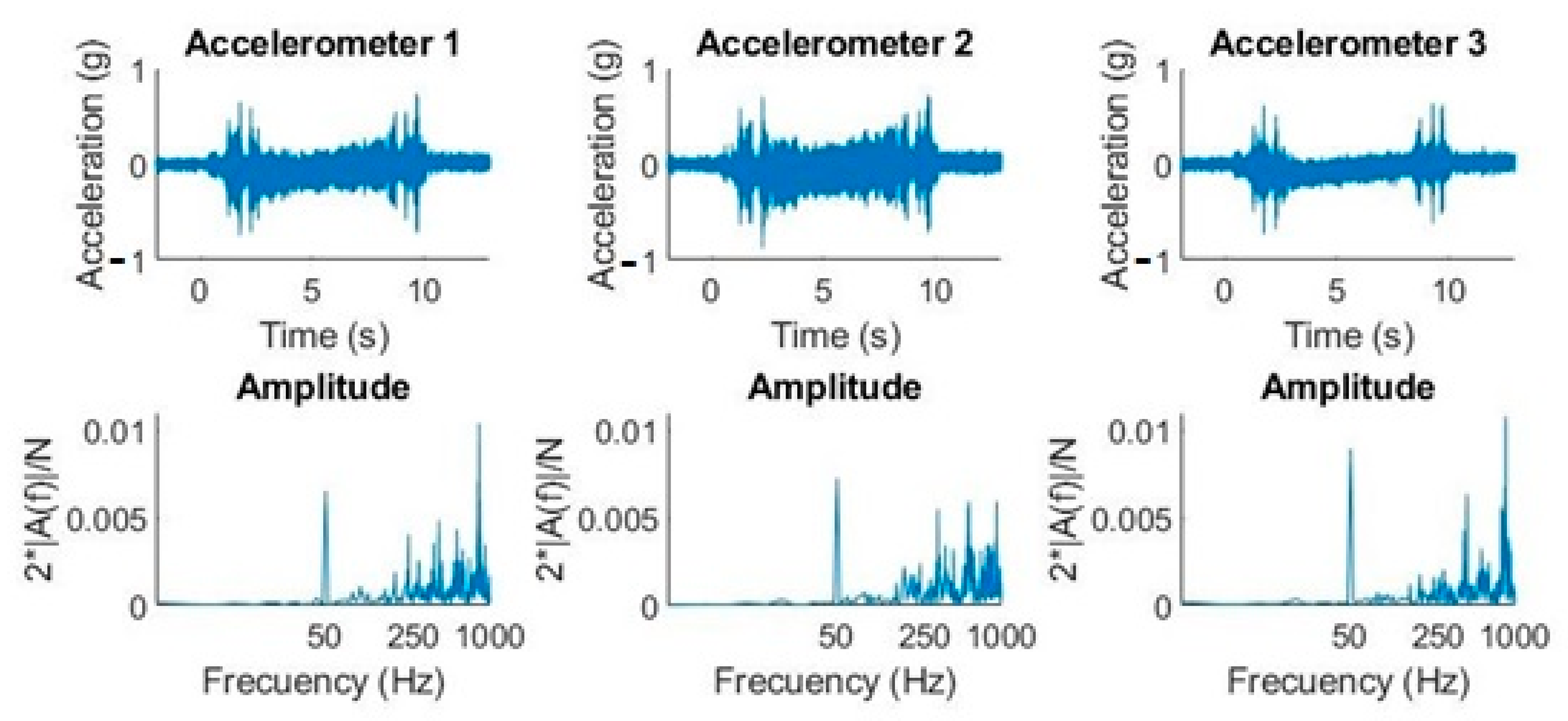
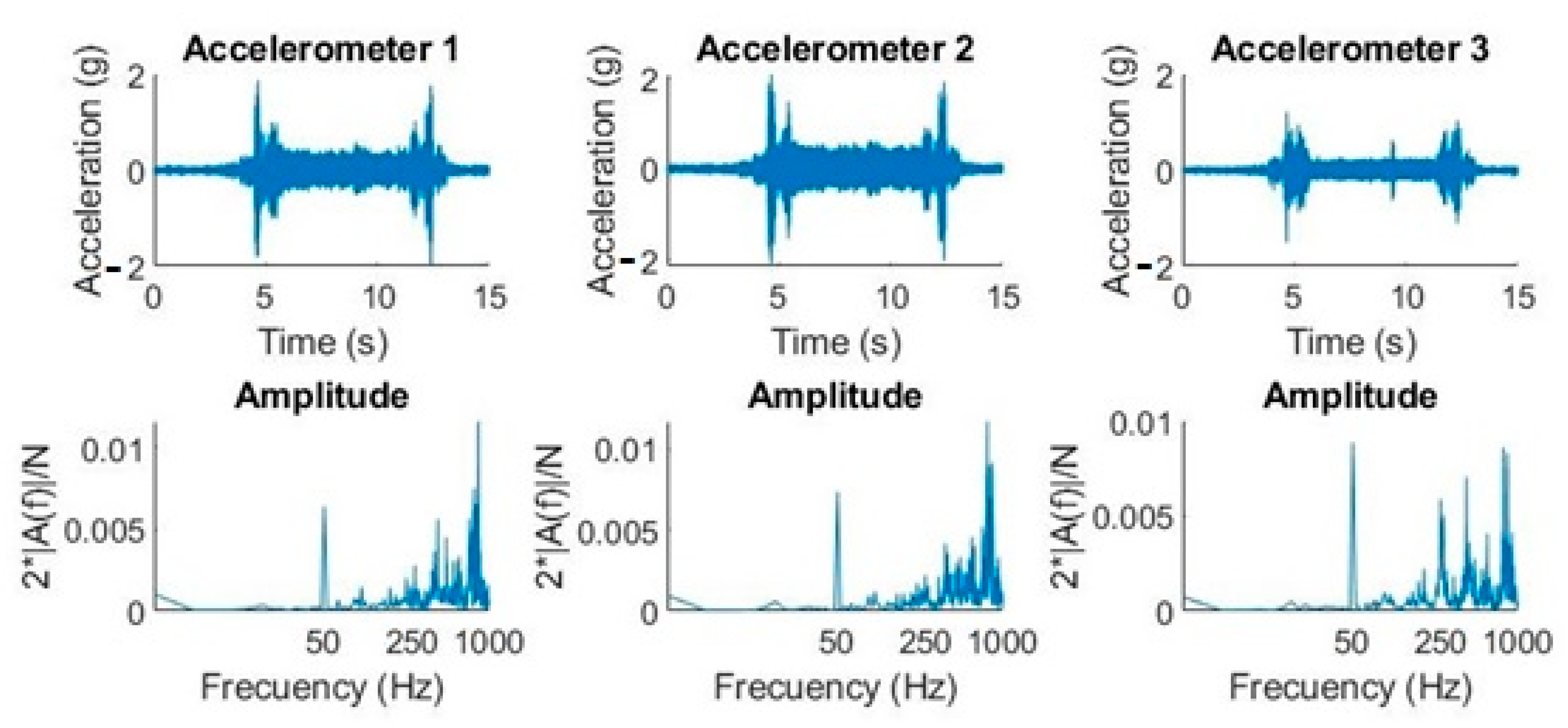

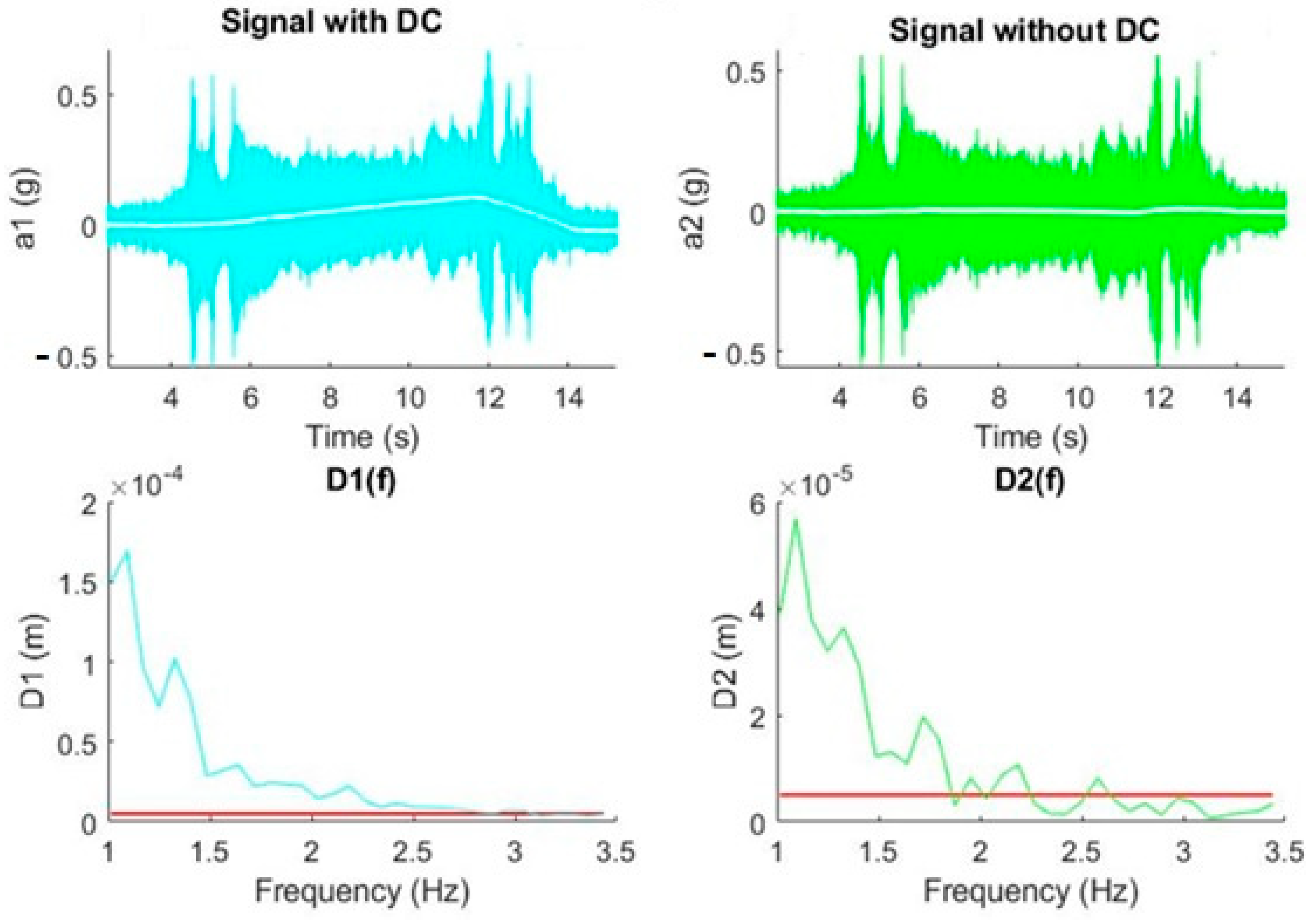
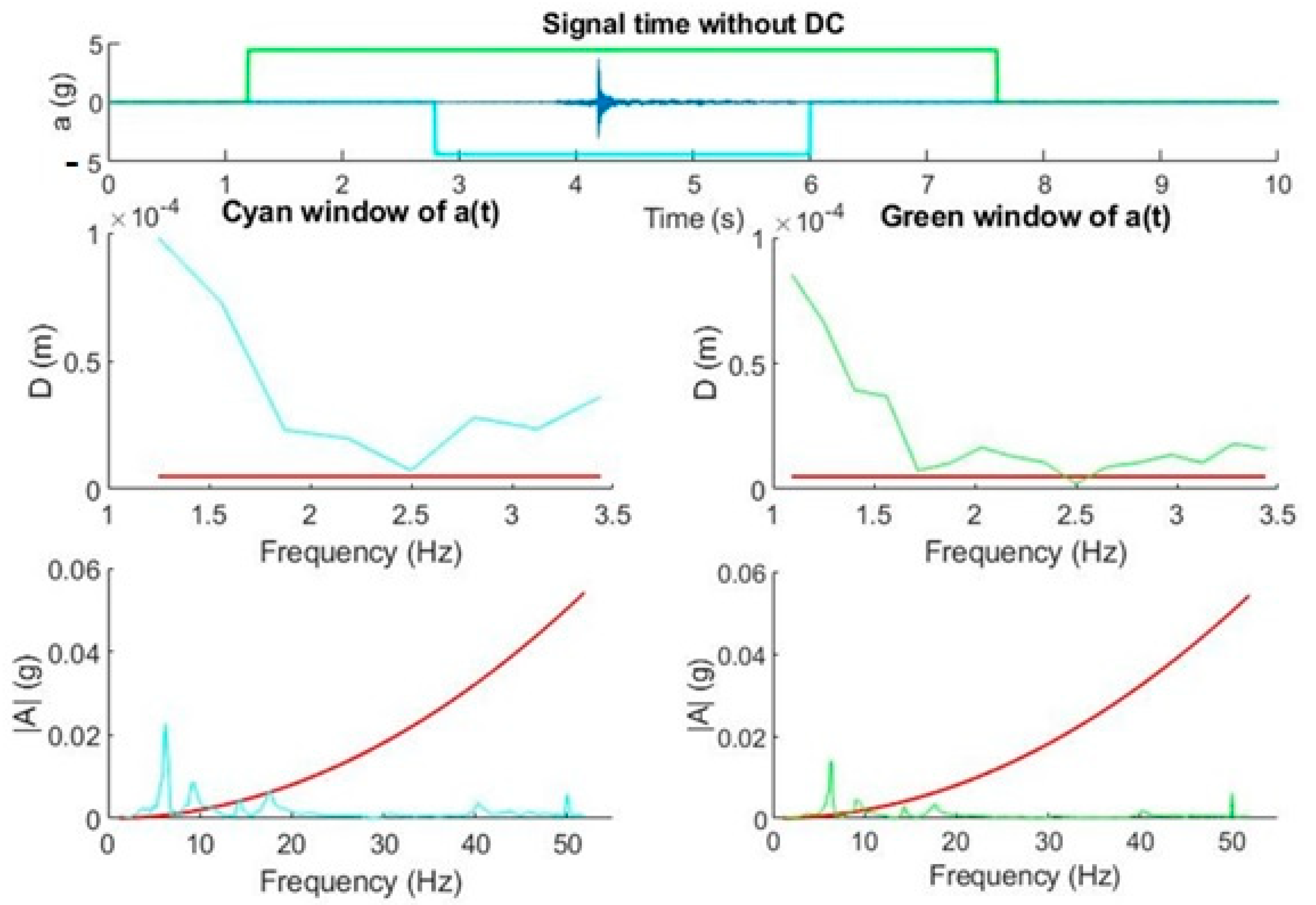
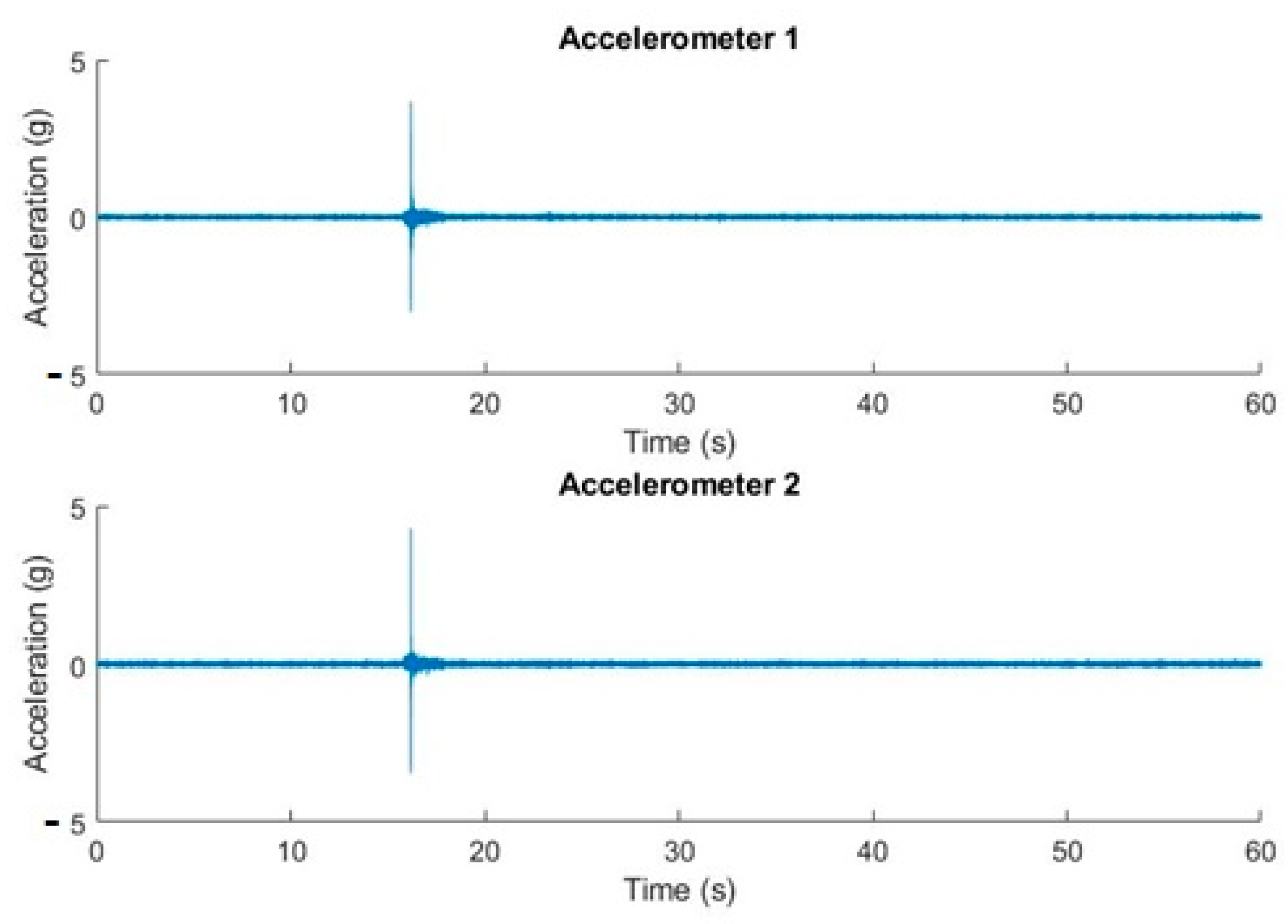
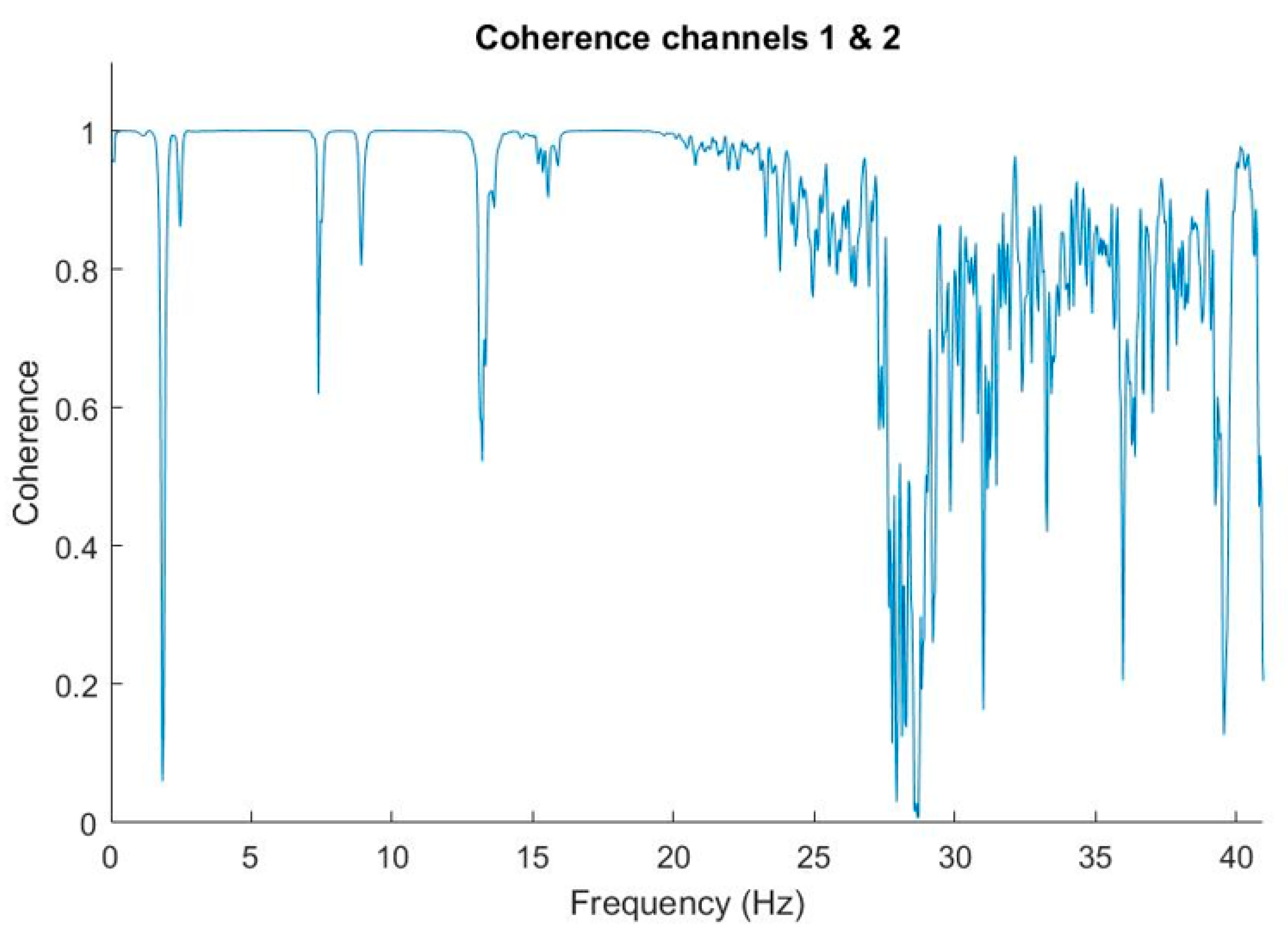
| Description | Wilcoxom 731A Accelerometer |
|---|---|
| Sensibility, ±10%, 25 °C | 10 V/g |
| Frequency response | ±10% 0.10–300 Hz ±3 dB 0.05–450 Hz |
| Resonance frequency | 750 Hz |
| Temperature range | −10 °C to +65 °C |
| Vibration limit | 10 g peak |
| Sensing element design | PZT ceramic/flexure |
| Weight | 760 g |
| Description | NI 9148 Ethernet Expansion Chassis |
|---|---|
| Network interface | 10BaseT and 100BaseTX Ethernet |
| Compatibility | IEEE 802.3 |
| Communication rates | 10 Mbps, 100 Mbps, auto-negotiated |
| Communication rates | 10 Mbps, 100 Mbps, auto-negotiated |
| Description | NI 9234 |
|---|---|
| Number of channels | 4 analog input channel |
| ADC resolution | 24 bits |
| Type of ADC | Delta-Sigma (with analog prefiltering) |
| Sampling mode | Simultaneous |
| Data rate range | 51.2 kS/s |
| Input range | ±5 V |
Publisher’s Note: MDPI stays neutral with regard to jurisdictional claims in published maps and institutional affiliations. |
© 2020 by the authors. Licensee MDPI, Basel, Switzerland. This article is an open access article distributed under the terms and conditions of the Creative Commons Attribution (CC BY) license (http://creativecommons.org/licenses/by/4.0/).
Share and Cite
Arranz Martínez, F.; Martín Ferrer, R.; Palacios-Navarro, G.; Ramos Lorente, P. Study on the Vibration Characteristics of the Telescope T80 in the Javalambre Astrophysical Observatory (JAO) Aimed at Detecting Invalid Images. Sensors 2020, 20, 6523. https://doi.org/10.3390/s20226523
Arranz Martínez F, Martín Ferrer R, Palacios-Navarro G, Ramos Lorente P. Study on the Vibration Characteristics of the Telescope T80 in the Javalambre Astrophysical Observatory (JAO) Aimed at Detecting Invalid Images. Sensors. 2020; 20(22):6523. https://doi.org/10.3390/s20226523
Chicago/Turabian StyleArranz Martínez, Fernando, Raúl Martín Ferrer, Guillermo Palacios-Navarro, and Pedro Ramos Lorente. 2020. "Study on the Vibration Characteristics of the Telescope T80 in the Javalambre Astrophysical Observatory (JAO) Aimed at Detecting Invalid Images" Sensors 20, no. 22: 6523. https://doi.org/10.3390/s20226523
APA StyleArranz Martínez, F., Martín Ferrer, R., Palacios-Navarro, G., & Ramos Lorente, P. (2020). Study on the Vibration Characteristics of the Telescope T80 in the Javalambre Astrophysical Observatory (JAO) Aimed at Detecting Invalid Images. Sensors, 20(22), 6523. https://doi.org/10.3390/s20226523







